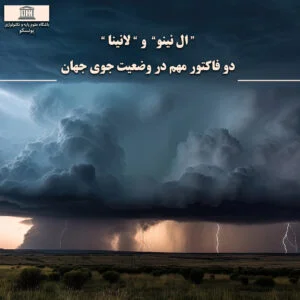El Niño and La Niña are two well-known weather phenomena that occur periodically, approximately every 7 years, and have significant effects on the Earth’s climate. These phenomena are caused by changes in the surface temperature of the Pacific Ocean and directly affect precipitation patterns, temperatures, and weather conditions around the world.
El Niño refers to the warm phase of these oscillations and occurs when the surface temperature of the water in the central and eastern Pacific Ocean increases abnormally. This increase in temperature causes changes in atmospheric circulation and precipitation patterns. In contrast, La Niña is the cold phase of this phenomenon and occurs when the surface temperature of the water in the same areas decreases abnormally. This decrease in temperature also has adverse effects on the weather and weather.
The effects of these phenomena on winter and early spring precipitation are very significant. When the phase of the oscillation leans towards El Niño, we usually see adequate and sometimes above-normal rainfall. This can lead to improved water resources and increased soil moisture. However, when the phase shifts to La Niña, rainfall decreases and the likelihood of drought increases.
Of course, these changes are not 100% certain and other factors can also affect the weather. However, El Niño and La Niña are known as two major phenomena in climate change, and their predictions help scientists better understand weather patterns.
The World Meteorological Organization recently announced that the probability of El Niño returning in the second half of 2023 is very high. This phenomenon can lead to increased temperatures in many parts of the world and have different effects on rainfall. In some areas, El Niño may cause heavy and flooding rainfall, while in other areas, it may bring drought and reduced rainfall.
These climate changes affect not only the environment, but also agriculture, the economy, and human life. For example, droughts caused by La Niña can lead to reduced agricultural production and increased food prices, while heavy rainfall caused by El Niño can cause devastating floods and widespread economic losses.
As a result, better understanding of these phenomena and their more accurate prediction can help societies prepare for their negative impacts. Meteorological and research organizations around the world are constantly studying and analyzing these phenomena in order to develop appropriate strategies to reduce their damage.


